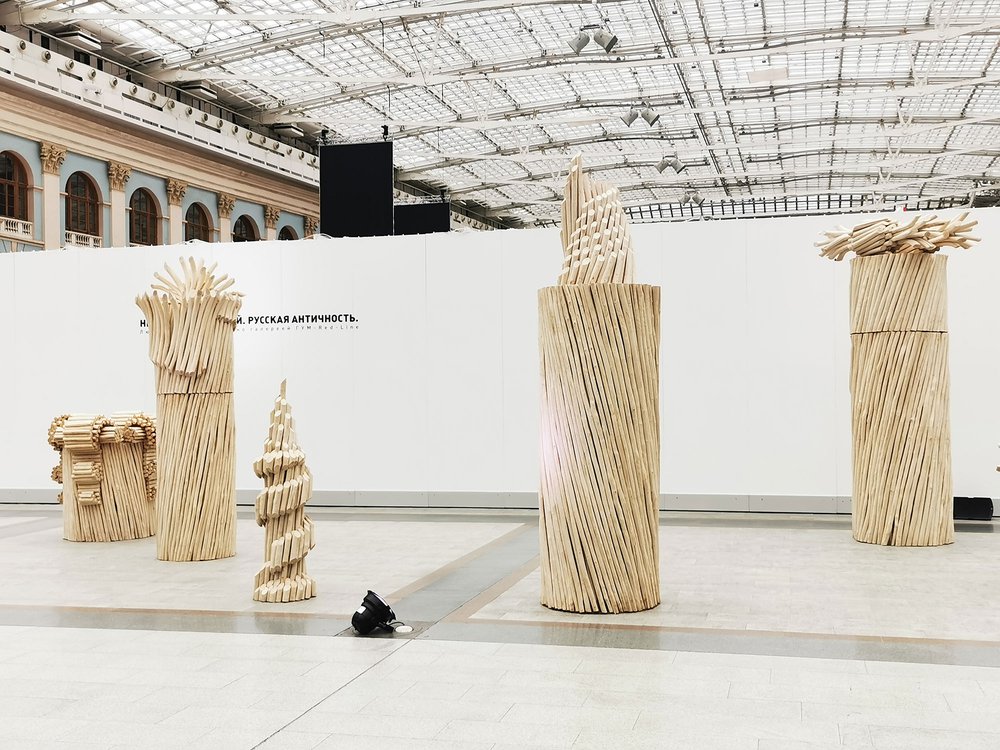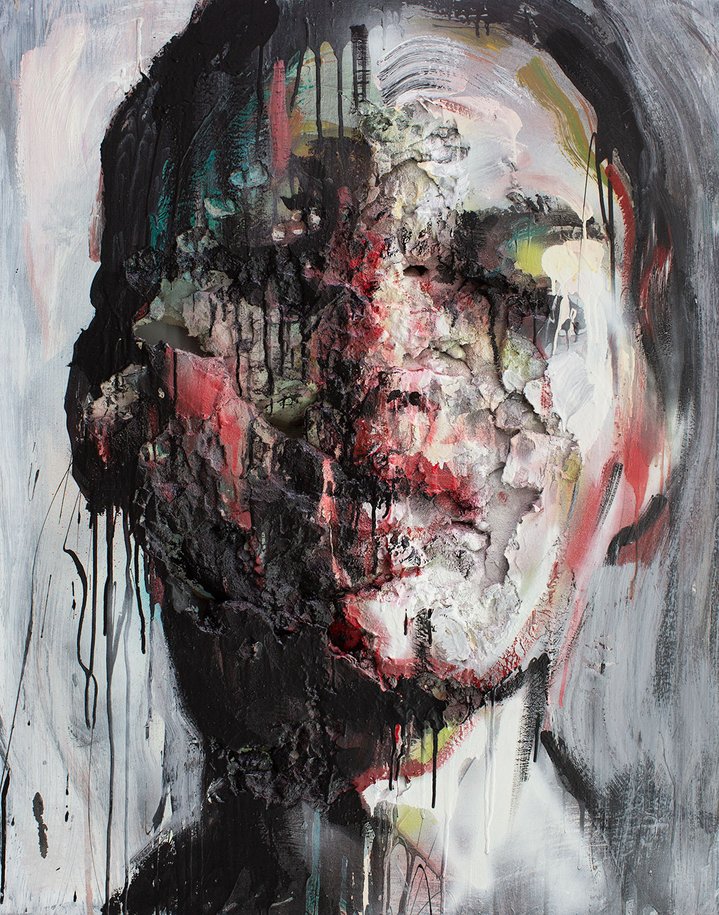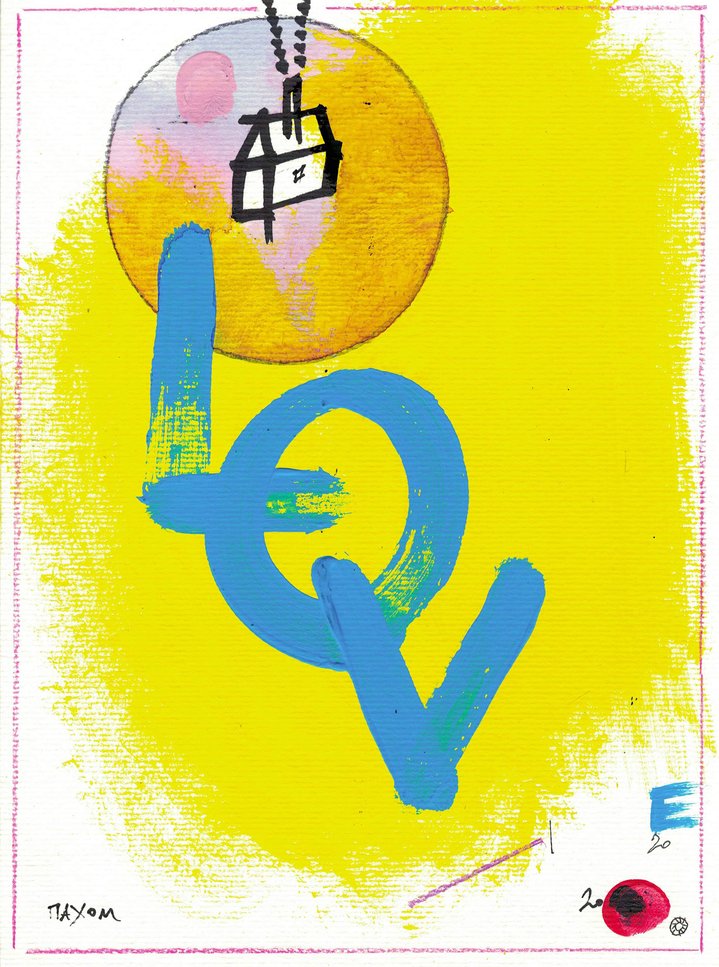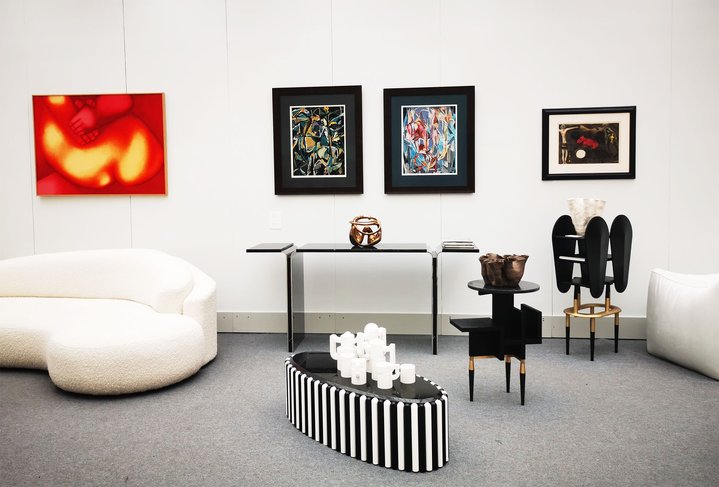Art Moscow: hard work and escapism at Russia’s art and antiques fair

Works by Nikolai Polissky. "Russian antiquity" exhibition by Gum Red Line gallery. Art Moscow, 2022
An art and antiques fair went ahead as planned in Moscow this April, despite uncertainty on the market and the sombre mood among Russian art professionals and collectors.
Art Moskva (now Art Moscow) may be one of the oldest art fairs in Russia but it has had a troubled and convoluted history. It used to take place at the Central House of Artists between 1996 and 2014 but was closed down by its founder Vassily Bychkov for its lack of profitability. The Central House of Artists itself then ceased to exist in 2019, when the building was handed over to the State Tretyakov Gallery. Art Moskva was subsequently given a new lease of life as a part of the Antique Salon, also founded by Bychkov, which takes place twice a year. Yet, in 2020 the Salon was cancelled twice due to the pandemic, so the first combined fair for antiques and contemporary art opened in Spring of 2021 at Gostiny Dvor, a historical venue close to the Kremlin. This year, it was rebranded as ‘Art Moscow’, while the autumn edition will retain the name ‘Antique Salon’.
The antiques section of the fair, usually rather glamourous and glowing with gilt frames, was smaller than usual. In the contemporary art section, the line-up was different to usual. Only two of Moscow’s heavyweight galleries, Krokin and Triumph, were present, occupying two booths each. Other established staples such as XL Gallery, Ovcharenko, pop/off/art and Iragui were wholly absent. None of the major galleries from St Petersburg took part. Yet, Moscow galleries which had been in hibernation for many years such as Frolov and Kino, miraculously resurfaced at the fair.
All the works on sale were as far from politics as possible, and the preference for all things cheerful and colourful was obvious all around. Apparently, the dealers who risked a lot by paying for booths that might not pay off, did not want to take on additional risks. Among the top works on sale were two 1970s paintings by the late non-conformist patriarch Oleg Tselkov (1934-2021) whose retrospective exhibition is on view at Moscow’s Museum for Modern art until the 8th of May. They were offered by the Heritage Gallery at 75,000 Euros each. Traditionally, Russian dealers set their prices in US Dollars or Euros, yet baffled by the current restrictions on the foreign currency market introduced by Russian financial authorities and fluctuating exchange rates, some switched to Roubles instead.
Atelier Choutko which collaborates with established Russian artists to create one-off and limited-edition tapestries and rugs, offered a tapestry by Olga Soldatova at 3,580,000 Roubles (about 45,000 US Dollars). However, prices were still expressed in Euros and Dollars at most booths. When asked about the exchange rate, dealers appeared confused. The Krokin Gallery offered paintings of the Kremlin by Konstantin Batynkov (b. 1959) at 9,000 Euros each. When asked about the rate, long-time gallery employee Alexander Petrovichev answered “The best one. If somebody prefers to pay in Yuan, that’s fine with us, too”. At the Syntax gallery, small works by Natalia Struchkova (b. 1968) were offered for 400 Euros each. The owner Elvira Tarnogradskaya who offered works by Struchkova, Liudmila Konstantinova (b. 1980), Gosha Ostretsov (b. 1968), Olya Kroytor (b. 1986) and others at her booth said that she chose to display “artists who needed the most support” at this time.
Many art collectors were missing, having gone overseas due to the uncertain political situation. Yet, when it came to visitor numbers, the fair was a big success. On the opening night, the walkways around the booths were as crowded as the Moscow metro at rush hour, although the surrealism of an event like this in times like these loomed at the back of everybody’s mind. At the Vellum Gallery, Lyubov Agafonova who showed works by Oskar Rabin (1928-2018), Komar and Melamid (b. 1943 and 1945) and Vladimir Yankilevsky (1938-2018) in her all-star booth, was outspoken on the subject. “A TV crew from the Culture channel came and asked me why I was here. I replied – ‘And why are you walking around here shoving your big red mike in my face? We are here for the same reason – this is my job, that’s why’.” Artist Maksim Ksuta (b. 1971), represented by Triumph Gallery and had one booth almost to himself, voiced another point of view. His paintings from “The Horizons” and sculptures from the “Shards of Memory” series transported viewers to another, more harmonious world, yet the artist himself showed no appetite for escapism. “I believe that exhibitions are important today, as they are places where people can get together and talk”, he said. Indeed, since popular social media platforms such as Facebook and Instagram are blocked by the state authorities and independent media outlets are blocked or closed down one by one as well, the space for discussion is shrinking day by day.
Despite the apparent absence of any political content, one artwork on display did come to the attention of members of the Russian Parliament. Big Mother (2018) a sculpture by Kiev-born Russian artist Oleg Kulik (b. 1961) was exhibited by the Frolov Gallery. Russian senator Alexei Pushkov and deputy of the State Duma Alexander Khinshtein considered the work to be a parody on Volgograd’s monument “Motherland Calls!” by Soviet sculptor Evgeny Vuchetich (1908-1974). This impressive 22 metre high sculpture, created between 1959 and 1967 is a part of a memorial dedicated to the Battle of Stalingrad, where the USSR’s Red Army defeated Nazi troops and their allies in 1942-1943. As reported by The Art Newspaper Russia, Khinshtein sent statements to the Prosecutor's Office and the Investigative Committee demanding that a criminal case be opened for the “Desecration of symbols of Russian military glory committed in public” which is Article 1 of Russia’s Criminal Code. Breaking this law can give you a fine of up to 300,000 roubles (approximately $3,750 dollars) or up to one year of corrective labour.









